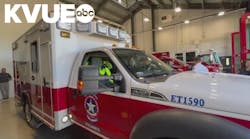Aug. 06--Last Tuesday, state wildlife biologists were going to begin tagging bulls in the Colockum elk herd in hopes of getting a better idea of the winter movement patterns of male elk that can often be hard to spot during population surveys.
They may be harder than ever to find this winter for the very same reason that study had to be put off: the Colockum Tarps fire, which by last Tuesday was three days into its rapid growth to 80,000 acres.
But finding them will be a small problem compared to the other one facing Washington Department of Fish and Wildlife officials: feeding them.
Much of the 125 square miles that has burned, a large portion of it shrub-steppe, is prime winter range used at various times by nearly half of the Colockum herd's 4,500 elk.
"With the fire still active it's not entirely clear yet, but it certainly could have a substantive effect this first winter in terms of (the elk herd's) distribution," said Scott McCorquodale, an elk-and-deer specialist with the WDFW. "Until people get in there and actually see what the fire mosaic is -- how much did it skip around and where was it a complete burn -- we won't know.
"We could get some green-up in some of those areas if there's some fall rain, but there probably won't be as much forage in the northern two-thirds of the winter range."
The fire has been largely confined to the Colockum and Quilomene wildlife areas, north of the Whisky Dick Wildlife Area in which half or more of the herd typically winter. Unlike the Oak Creek and Wenas wildlife areas, which have a winter feeding program to help elk through difficult winters, there is no such program Colockum and Whisky Dick areas, where there has never been a shortage of winter forage.
But with forage to the north largely scorched by the wildfire -- the cause of which is still under investigation -- the remaining elk will likely have to look elsewhere for their winter forage. That could mean they will either come south into the Whisky Dick -- where there's forage, but already some 2,500 elk enjoying it -- or seek forage in different directions, which means they could end up on private fields of alfalfa or other crops.
"Whatever they do," McCorquodale said, "they're either going to end up where you don't want them or they're going to end up in a place where you want them, but where there are already a lot of elk."
Copyright 2013 - Yakima Herald-Republic, Wash.





